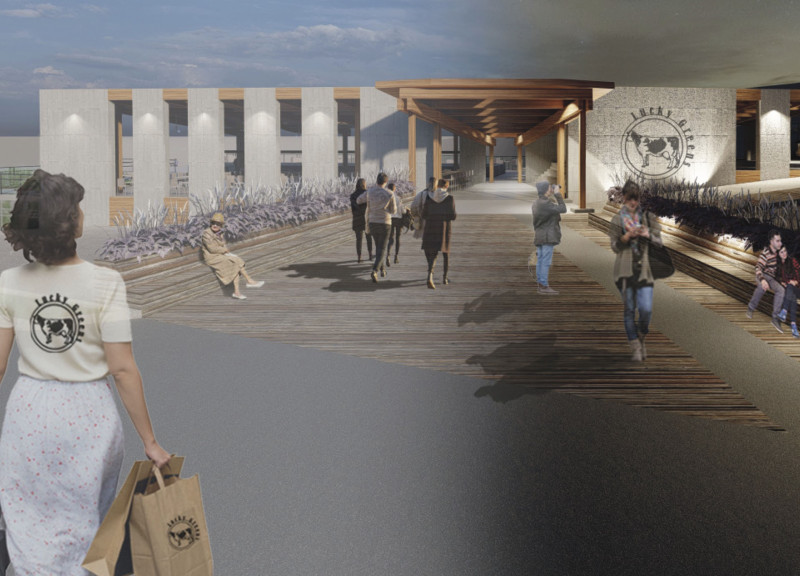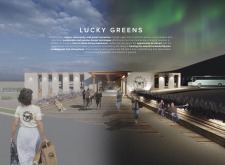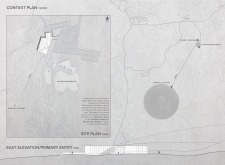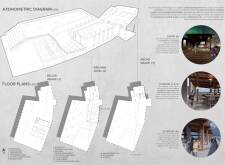5 key facts about this project
The overall design emphasizes fluid movement throughout various interconnected spaces, enhancing visitors’ experiences while maintaining a deep connection to the natural landscape. Upon entering the facility, visitors are welcomed into an informational area that sets the tone for exploration and engagement with the local culture. The dining spaces, both inside and on the patio, are intentionally designed to accommodate large groups while allowing for intimate gatherings, fostering social interaction and community presence.
Unique Aspects of the Design
What sets the Lucky Greens project apart from other architectural initiatives in similar contexts is its strong commitment to sustainability and cultural identity. The use of reclaimed wood and green concrete reflects a conscious choice for environmentally friendly materials. These materials not only reduce ecological impact but also resonate with the local architectural tradition. The integration of greenhouses directly within the facility highlights the project’s commitment to local food production and education about sustainable practices.
The architectural layout includes a multipurpose hall that can adapt to various community events, providing flexibility in usage. This design element ensures that the space remains active, promoting increased local participation. In addition, the outdoor market area adjacent to the greenhouses serves as a significant contribution to community economic development.
Integration with Natural Elements
The Lucky Greens project also features noteworthy environmental interaction. The design incorporates a water garden that captures snowmelt, serving both functional and aesthetic purposes. This feature not only enhances the landscape but also contributes to the building's sustainability by managing water resources.
Overall, the architectural approach taken in the Lucky Greens project represents a considered effort to blend functionality with ecological and cultural sensitivity. The integration of flexible spaces, community-focused design, and sustainable material choices resonate meaningfully within the local context.
For more detailed insights, it is advisable to explore the architectural plans, sections, and designs related to this project. These elements provide a deeper understanding of how architectural ideas manifest in this contemporary design, contributing to its overall impact within the region.


























